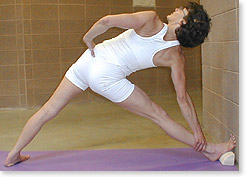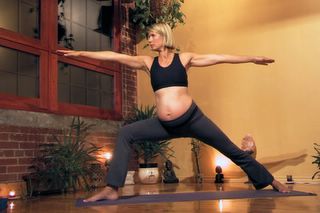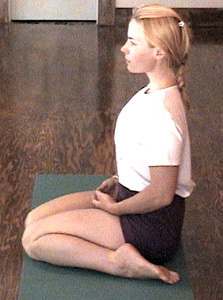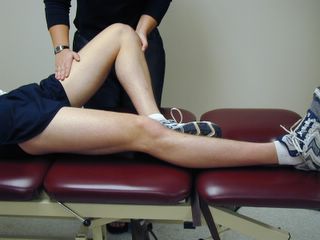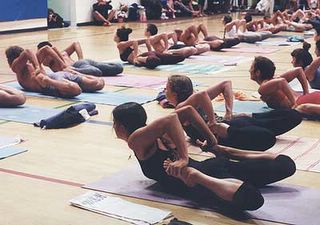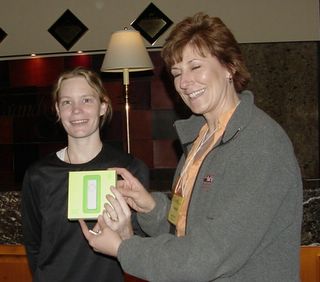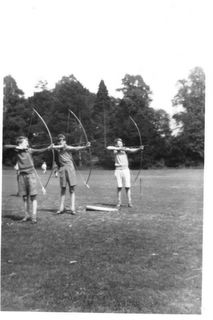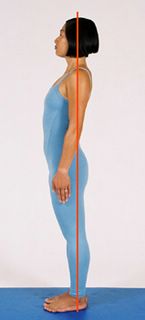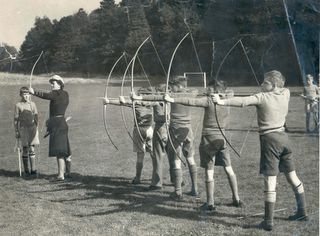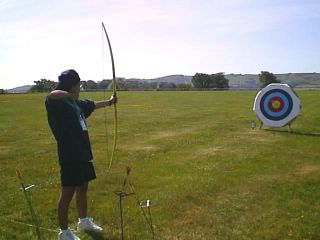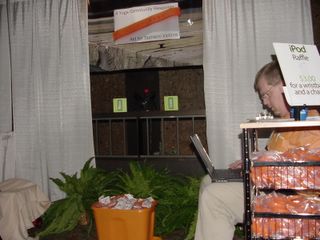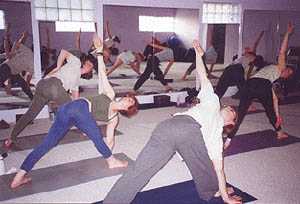I promised I’d tell you about the worst accident I’ve ever seen in a yoga class.
The pose was revolved triangle,
parivrtta trikonasana. Students were lined up along a wall because I wanted them to be able to touch their back heels to the wall.
 revolved triangle pose
revolved triangle pose 
As she was coming into the pose, one of my students lost her balance. It’s a precarious pose, after all.
Because her heel was against the wall, she couldn’t move that foot when she started to fall. When she tried to move her other foot, the sticky mat bunched up on the carpet. Her foot got tangled. She tipped over.
Her shoulder broke the fall as she crashed to the ground. It was dislocated. She couldn’t move her arm at all. The pain was excruciating. She was very embarrassed.
How you handle this circumstance as a teacher is a story in itself. I’ll tell it later. Until then, don’t doubt that an ambulance ride isn’t what comes to mind when I think of yoga.
What was to blame?
Was it the sticky mat? If it hadn’t slipped and bunched up, she could have repositioned her foot.
Was it the carpet? Had we been practicing on a bare floor, the mat wouldn’t have slipped.
Was it the wall? If we’d been out in the middle of the room, she could have moved her back foot..
Was it the pose? It’s challenging one. Had we been doing something else, like a sitting or reclining pose, she wouldn’t have fallen.
After this careful and insightful analysis of what went wrong, you might be wise to never use a sticky mat, never practice on carpet, never practice near a wall, and never do
parivrtta trikonasana. Never.
That’d be like throwing the baby out with the bath water.
Why? Because all of these things are merely props. They’re just tools. They are simple and understandable objects that we use for a particular instructional or practical purpose. They are not bad props.
When unfortunate events occur, the mind tends to do what the mind does. It churns. It whirs. That’s what Patanjali taught in the first chapter of the YogaSutras. He said, “
yogas chitta vrtti nirodha.”
Vrtti is the key word here. Your mind (
chitta) spins in a vortex, just like your torso turns in revolved triangle. Yoga, says Patanjali, is the state you attain when the churning and turning (
vrtti) of your mind cease (
nirodha).
One pattern the mind likes to repeat is distinguishing between two types. Classifying. Judging. Black or white. Left or right. Female or male. And, the big one:
good or bad.
When something’s bad, you push it away. You avoid it. You resist it. When something’s good, you crave it. You seek it. Patanjali warns us that this particular habit of mind leads to suffering.
It’s called dualism, this drive to divide everything into opposing pairs, to dissect. You don’t have to do it. You have a choice. But we’re so blinded to it we can’t see unity. We can’t see unifying principles. We don’t know union. We’re strangers to holism. We’re addicted to judging.
But Patanjali says we can see things as they really are, if we practice yoga. He promises that if we practice, we can drop dualism.
One author has translated Patanjali's second chapter
like this:
46. Postures (asanas) should be steady and pleasant.
47. Asanas are mastered by relaxed effort and
remaining unaware of the body.
48. From that, one is no longer disturbed by the
dualities (ie. pairs of opposites such as hot/cold, pleasure/pain,
etc.)
Then a mat can simply be a mat, and a wall can be a wall. They don’t have to be bad because a yogi dislocated her shoulder. For that matter they don’t have to be good, either. They can just be neutral. They can simply be useful for the particular purpose at hand.
See if you can see
things as they really are today, not good, not bad.
Things and events are what they are, what matters is how we choose to respond to them.
Don't just read about it. Get up. Experience it. Experience
yoga!Kevin Perry
www.ExperienceYoga.orgp.s., Even the Asian Tsunami can be viewed as a neutral event. But we can still respond with compassionate hearts. We're raising funds this weekend at the Yoga Journal conference in Lake Geneva, WI by selling I DO YOGA wristbands. Every wristband sale generates a $1 donation to the American Red Cross for Tsunami relief aid. You can get yours at
www.WearOrange.org. And it's really fun to go
www.WearOrange.org, click on "community" and read what yogis from all over the world have said about why they do yoga.
Copyright 2005. All rights reserved by Mo Yoga LLC.


